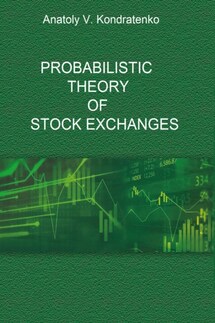approach for the one-good, one-buyer, and one-seller market economy. Let price functions
p>1>D(
t) and
p>1>S(
t) designate desired good prices of the buyer and seller, respectively, set out by the agents during the negotiations between them at a certain moment in time
t. Analogously, by means of the quantity functions
q>1>D(
t) and
q>1>S(
t) we will designate the desired good quantities set out by the buyer and the seller during the negotiations in the market. Below, for brevity, we will refer to these desired values as the price and quantity quotations, which can or cannot be publicly declared by the buyer and the seller, depending on the established rules of work on the market. Note that the setting out of these quotations by the market agents is the essence of the most important market phenomenon in classical economic theory, namely the market process leading eventually to the concrete acts of choices of the market agents, being implemented by the buyer and seller through making deals (see below). Graphically, we can display these quotations as the agents’ trajectories of motion in the formal economic space as will be shown below. In real market life, these quotations are discrete functions of time, but, for simplicity, we will visualize them graphically (as well as supply and demand functions, see below) as continuous linear functions or straight lines. This approximate procedure does not lead to a loss of generality, since these functions and lines are necessary to us. They are only for the illustration of the mechanism of the market work and for the most general graphic representation of the motion of the market agents in the two formal economic spaces, corresponding to the two independent variables, price P and quantity Q. We will refer to this agent motion as market behavior, for brevity, and sometimes the evolution of the economy in time. All these terms are, in essence, synonyms in this context of the discussion. And for simplicity we will call these spaces the price space and the quantity space, respectively, as well as the united space as the price-quantity space.
By setting out desired prices and quantities this way, buyers and sellers take part in the market process and act as homo negotians (a negotiating man) in the physical modeling, aiming to maximum satisfaction in their attempts to make a profit on the market. This is the first market equilibrium price p>E>>1 and quantity q>E>>1 at a moment in time t>1>Eat which the agents’ trajectories intersect, the deal takes place, and the interests of both the buyer and seller are optimally satisfied, taking inexplicitly into consideration the influence of the external environmental and institutional factors on the market in general. It is here that one can see similarity in the movement of the many-agent economic system in the price-quantity economic space (described by the buyer’s trajectories p>1>D(t), q>1>D(t) and seller’s trajectories p>1>S(t), q>1>S(t)) to the movement of the corresponding many-particle physical system in the physical space (described by the particles’ trajectories x>n(t)) which is also subject to a certain physical principle of maximization. In Fig. 1, we give the graphic representation of these trajectories of agents’ motion depending on the time with the help of the suitable coordinate systems of the time-price (







